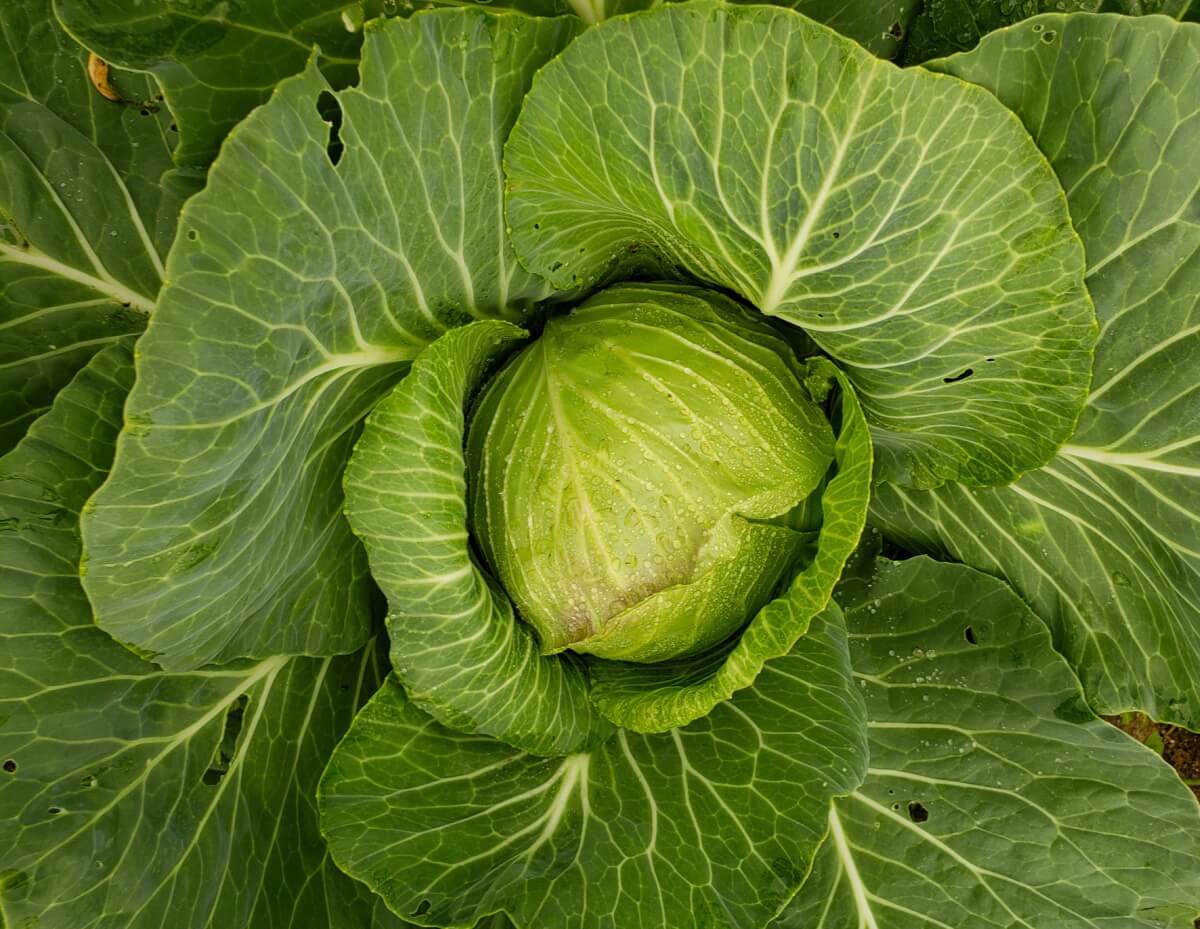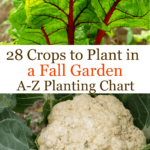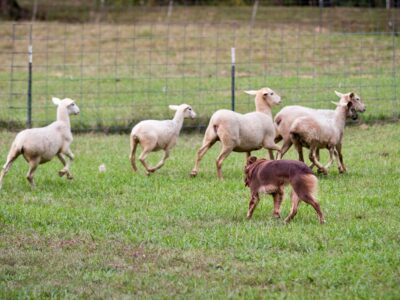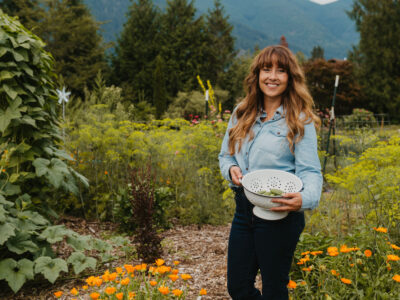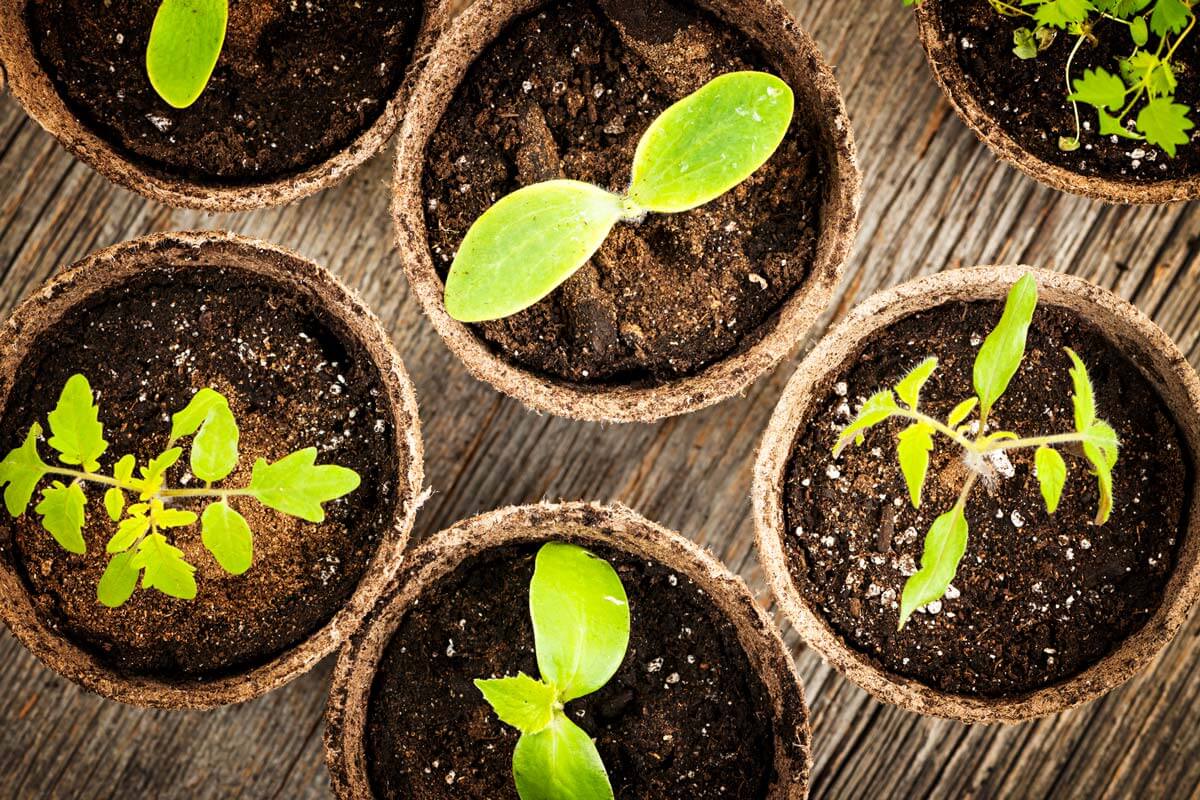Would you like to know what to plant in July or August for fall and winter garden crops? You'll be pleased to know that you don't need to live in southern zones (like California, Texas, or Florida) in order to maximize your annual vegetable growth.

Knowing what to plant in July/August will help you to be able to harvest through fall and maybe even into the winter months, depending on your climate. Harvesting food from your garden as close to year-round as possible is pretty amazing and doable!
This is exactly how I store my potatoes throughout the winter without a root cellar! And if you've never tasted Brussels sprouts after a frost, you're in for a treat!
I've discussed fall gardening a lot throughout the years, so this blog post includes three podcasts and is a compilation of multiple blog posts to make one comprehensive resource for those looking to grow a fall garden.
This post includes the following podcasts:
There are three Pioneering Today Podcasts and two videos included in this post. Feel free to download them and listen to or watch them at your leisure!
Episode #265 (at the top of this post), “Tips for a Successful Fall Garden & When to Plant for Fall Harvest.”
Episode #191 (below), “14 Vegetables to Plant in August for Fall Garden Crops.”
Episode #34 (below), “Planting a Fall Vegetable Garden.”
Why Mid-Summer Planting Works
It may seem counter-intuitive to plant cool-weather-loving crops during the hottest time of year. And you may be wondering how seeds even germinate when the temperatures are soaring.
Since many cold-weather crops tend to bolt during hot temperatures (most often above 85°F), there are a few things to keep in mind when starting seeds in the summer for your fall garden.
- Timing – The most important thing with a fall garden is getting your timing down. Be sure to read further in this post on “How to Plant in August” for more tips on timing.
- Start Indoors – Some plants prone to bolting in hot weather may do better if started indoors in a controlled environment. You can check out my ultimate seed-starting guide for more information on starting seeds indoors. By starting these crops indoors, you're avoiding the hottest temperatures of the year. When it's time to transplant them out, the evenings will be getting cooler, and the temperatures will be on a downward trend. More times than not, this will help alleviate the chance of bolting.
- Protect from Heat – Cold-weather crops do best when planted in areas protected from direct sun/heat. I do this by planting crops under the shade of my high tunnel, a house, a tree, or in the shade of climbing crops like beans or peas.
- Keep Seeds Damp – Seeds need consistent moisture to germinate. If seeds dry out, they won't rehydrate and keep growing, so it's essential to keep them evenly watered until germination.
- Use the Board Trick – If planting seeds that may be prone to drying out, you can use this board hack for germinating seeds in hot weather. Be sure to check on the seeds daily and remove the board as soon as the first seed has germinated.
- Mulch – Adding wood chips on top of your soil will help keep the soil and roots of your plants cooler. Furthermore, mulch acts like a sponge and will absorb water, slowly releasing it as the soil dries out. After adding a thick layer of mulch to my garden, I drastically reduced how often I needed to water. Read more about whether or not mulch is beneficial in the garden here.
Why You Should Plant in August
Growing up and when I first started gardening as an adult, we just planted a summer vegetable garden. All the crops for the year were planted at the same time.
When the first frost arrived, we were done which meant you had to preserve and put up anything that you weren't consuming while it was fresh.
As I got deeper into this rabbit hole of providing for ourselves and becoming more self-sufficient, I noticed a few gardeners planted things very early and even more planted things in the fall. I learned there was a difference in the types of crops planted and when.
Late summer is the perfect time to plant crops that thrive in cooler weather. As a bonus, these crops' flavor improves with the cold. To improve on this even further, you can get your FREE succession sowing guide here to stagger the harvest of your crops and alleviate the stress of the harvest all coming in at once.
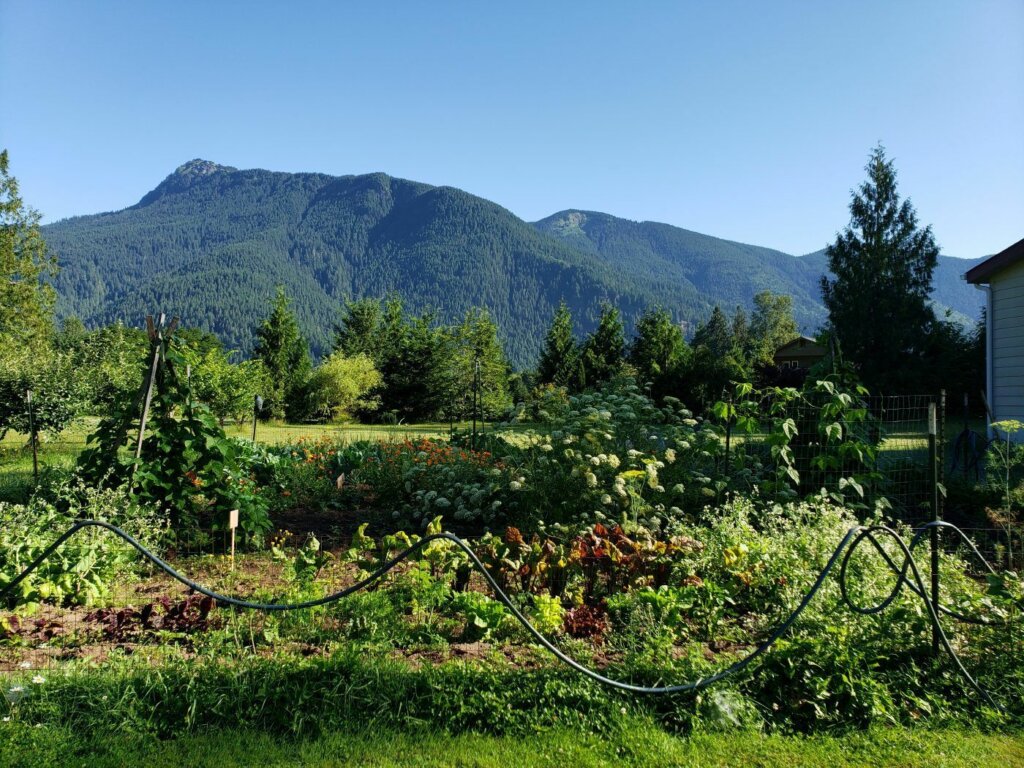
What Are Gardening Zones?
Your gardening zone can help you to know which delicious vegetables you can grow to add to your fall soups and put up for the winter.
The Plant Hardiness Zone Map shows the standard for gardeners to determine which plants are most likely to do well in that location. The map is based on the average minimum winter temperatures in the zone and the average days in the growing season.
There are a total of 13 zones in the United States and Canada. Each zone is 10 degrees warmer than the previous zone, with the coldest being zone 1 and the hottest being zone 13.
Most plants purchased at a nursery will include a hardiness zone suggestion on the label, and most nurseries in your area will carry plants growing well in your zone. The 2012 USDA Plant Hardiness Zone Map allows you to punch in your zip code and get your zone.
Gardening can be time-consuming, so knowing your gardening zone, as well as your first and last frost date is very important. Pouring your time into a plant that’s not suited for your zone, or that won't grow in time for the first frost can be very frustrating.
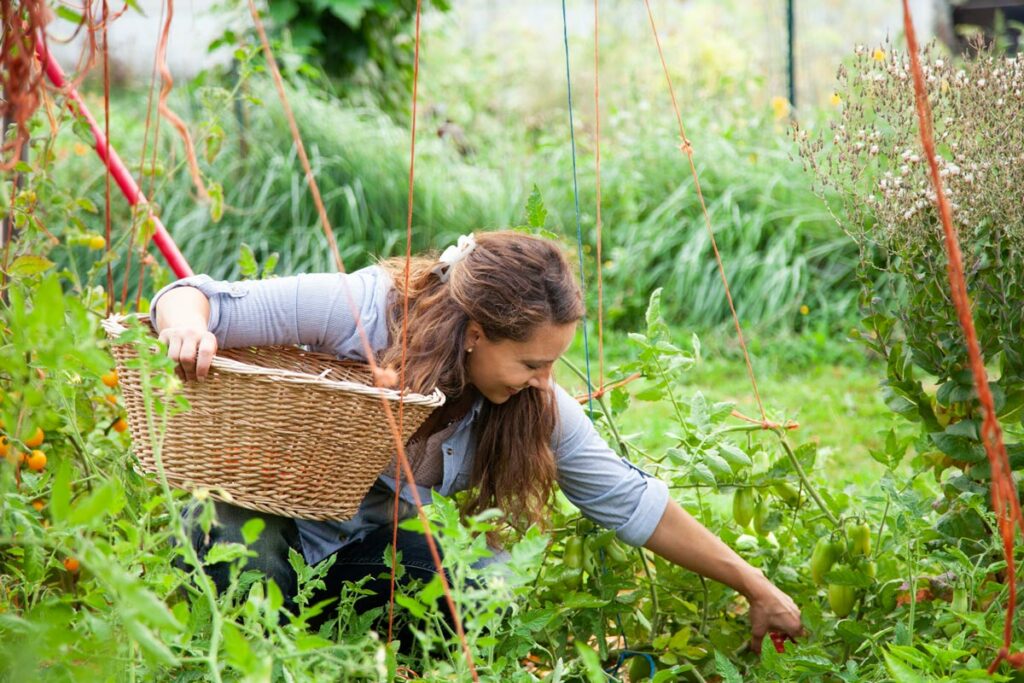
My Plant Hardiness Zone
The tips I will share with you are for gardening zones 5 through 8.
Technically, if you look at the map, it says my gardening zone is about 7b, but I know because we're up here in the foothills of the mountain that we're closer to gardening zone 6 as far as average temperatures and when we have our first and last frosts.
I usually start planting most of our warm-weather crops in mid-May, and my first hard freeze will come in mid-September. If we are lucky and have a nice long fall, it may be October before we get a killing freeze.
I plant my fall crops in late July and early August, which still gives me plenty of time to grow those fall crops.
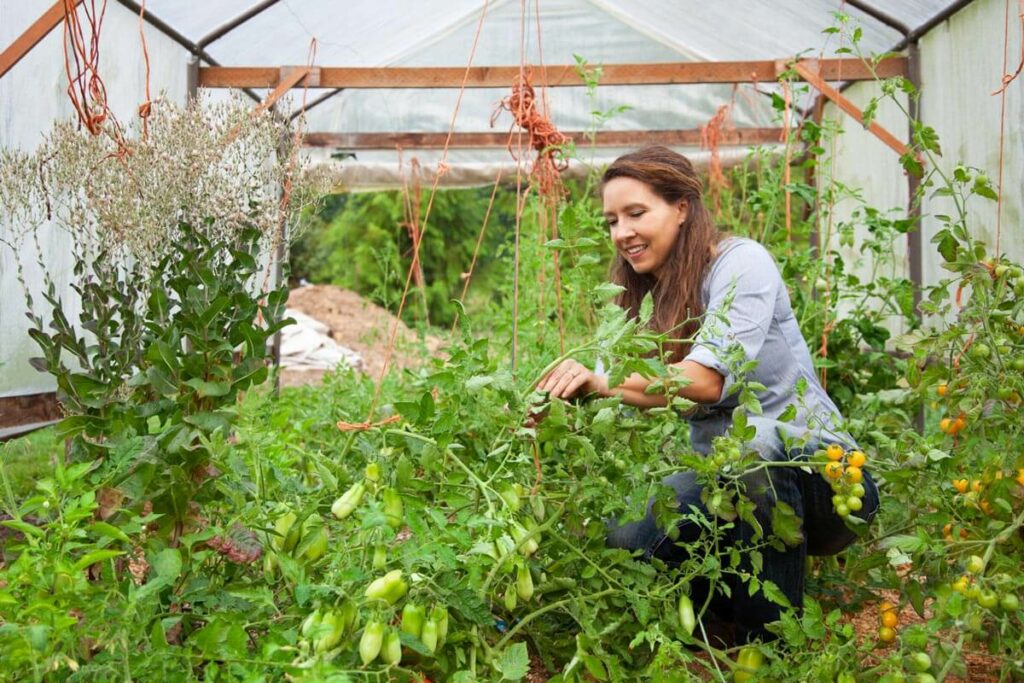
How to Plant in August
It’s important to sit down and make a plan for your fall garden. If you miss critical dates with your frost-tender varieties, your plants may not be ready to harvest before the first frost. If you have my book, The Family Garden Plan, then you have all the charts telling you how much to plant per person you’re feeding. Then, grab a copy of The Family Garden Planner so you can keep records of what you plant and harvest year over year.
- Get A Calendar – Find your first average frost date and count how many weeks backward from that date. This will let you know when you need to begin planting those crops. The date will be determined by the type of crop you’re planting. Pro-Tip: Broccoli, cauliflower, brussels sprouts, and cabbage do best when seeds are started indoors for a fall garden. If the soil is too hot, they won't germinate as well. My Ultimate Seed Starting Guide will help you know which plants to plant and when.
- Set Up Shade – If the weather is too hot, cool weather crops won’t germinate. Set up something to shade the area where you’ll be planting them, like under another plant. For example, starting your lettuce under your bean teepee works great!
- Carefully Review Grow Times – The biggest mistake people make is missing their window of opportunity to get their seeds in the ground. Carefully review how much growing time each plant needs and get them sown in time. Direct sowing vegetables and planting from starts in the fall will be very different so check the requirements of each plant.
- Composting – Take the time to treat your soil with some fresh compost for those new plants. You can learn how to make your own compost at home here.
- Get Plants/Seeds in the Ground – Watch the weather and get your seeds and plant starts in the ground on a cooler and overcast day. This will keep your plants from burning.
- Water – Watch for dry spells and keep your new plants and seeds moist. Moist soil stays cooler than dry soil, and these cool-weather plants prefer cooler soil. You must ensure they have adequate water, especially for direct sowing seeds. This is especially important for carrots because if they dry out during the germination phase, they won’t sprout.
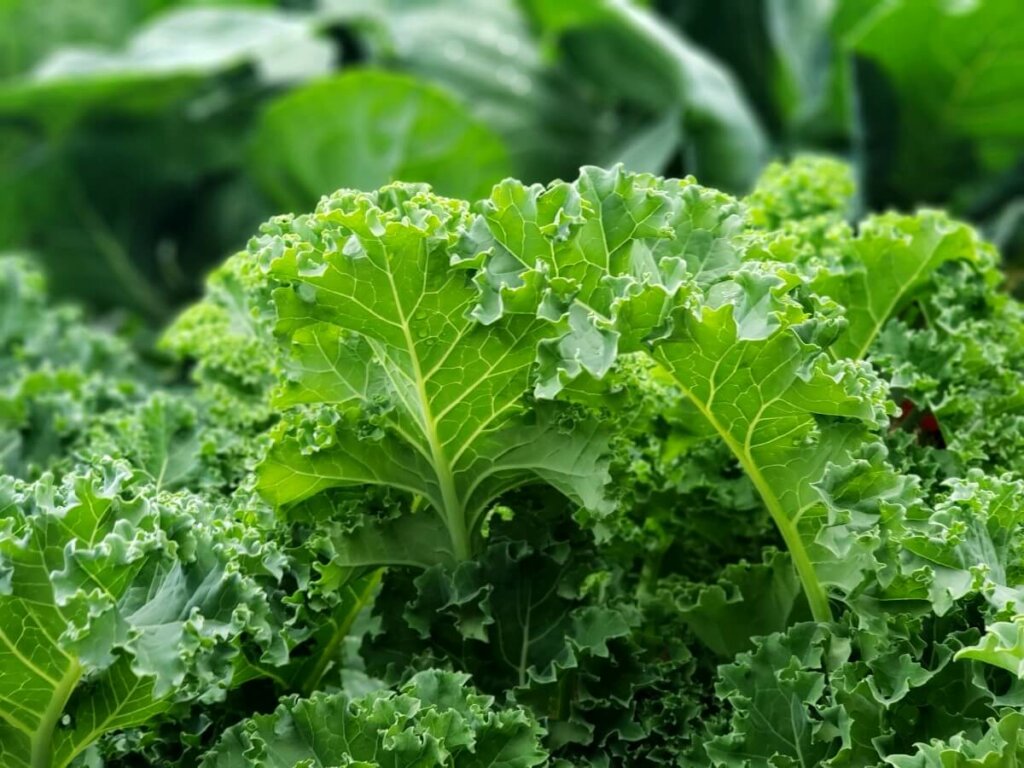
What To Plant in August
You can grow two types of plants this time of year to harvest in the fall and winter.
Brassicas
This time of year, you will want to plant your Brassica family of vegetables from starts. It will be too late in the year to grow them from seed. Plant them from seed in your house or greenhouse because they need time to grow out of the summer’s heat. Plants in the Brassica family are frost hardy, so a light frost won’t kill them.
- Cauliflower – You will want to start your cauliflower indoors 10-12 weeks before the first frost and move plants outdoors in late July or early August. Cauliflower is cold hardy when it’s established, but you’ll want to protect them once the frost comes.
- Cabbage – Cabbage needs 6 to 8 weeks before the first frost to reach maturity. Cabbage becomes sweeter when grown in cool weather which makes it the perfect fall crop.
- Broccoli – Broccoli that matures in the cooler fall months produces heads that taste sweeter than heads you harvest during the summer months. Broccoli grows best in soil temperatures between 65°F and 75°F, so the fall months are ideal for this crop. Broccoli should be direct sown 10-12 weeks before the first frost date or started 15-17 weeks indoors.
- Brussels Sprouts – Start Brussels sprouts 10 weeks before the first frost date. You’ll want your Brussels sprouts to go through a hard frost to get the absolute best flavor out of them. Read here for a step-by-step tutorial on planting and growing Brussels sprouts.
- Kale – Kale needs 6-8 weeks before the first frost and should be direct sown. Kale also tastes best after a frost. One year, I harvested kale clear into February, even with three feet of snow! The kale will slow down on producing new leaves once short days and long nights come but you can continue to harvest established leaves. Check out these methods for extending the garden season here.
- Turnips – Many kinds of turnips grow in only eight weeks making them an ideal fall crop.
- Kohlrabi – Kohlrabi should be sown indoors 12-14 weeks before the first frost date and transplanted outdoors 6-8 weeks before. Kohlrabi can withstand an early autumn frost and, like many brassicas, the flavor is improved.

Anything Grown From Seed
The second type of fall crop is anything that you can grow from seed. Typically these are things that you’ve already done a summer crop of, and you still have time to do another round in the fall. These will include peas and beans, root vegetables and leafy greens.
When direct sowing some of these plants, if you get really high soil temps, you may have an issue getting them to germinate. Knowing this, I always plant extra seeds and thin them out later if necessary (and use the board hack!).
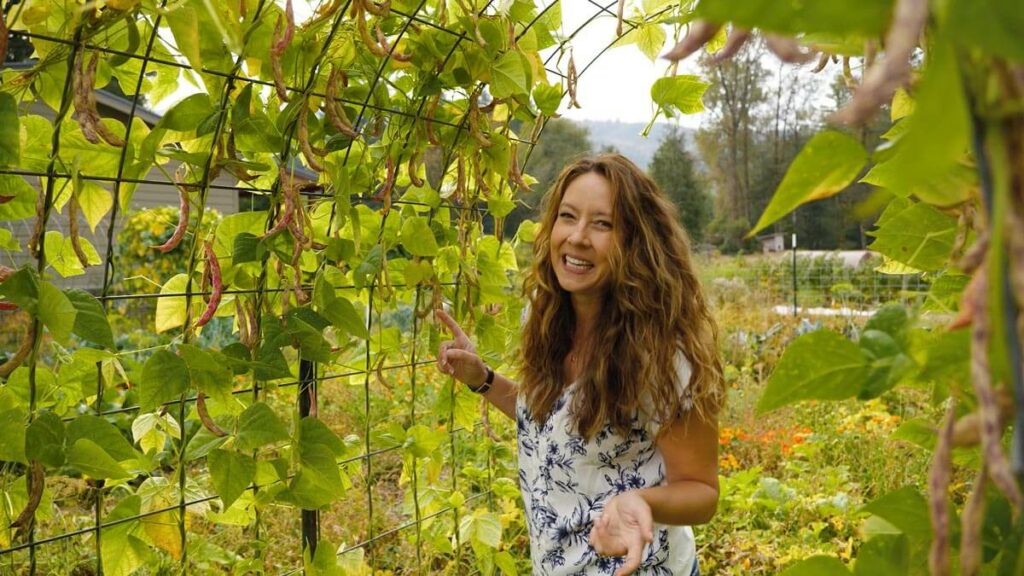
You may want to look around your garden for areas with some natural shade. You can also use shade cloth to keep soil temperatures down.
- Snow Peas or Sugar Snap Peas – These should be direct sown because they, just like beans, don't like their roots being messed with. Snow peas are great for growing in places where you have a warm climate through fall and into winter because they're going to produce better than in really hot temperatures. If it gets really hot and you have a long hot spell (highs of above 90°F during the day) pea blossoms won't set fruit. You'll get blossoms, but you won't actually get a lot of harvest.
- Beets – They will tolerate some frosts, and if they're well established, and you have mild winters, you can mulch heavily and leave the beets in the ground and harvest them through fall as long as your ground is not frozen. Beets should be direct sown as well 8-10 weeks before the first frost date. They're a little more tolerant of warmer soil temps, germinating in soil that is up to 85 degrees Fahrenheit. If you don’t get really hard frosts, you can mulch and harvest your beets through winter. Read here for a step-by-step tutorial on planting and growing beets. Pro-Tip: For better germination in the summer months, soak your seeds in water for several hours before planting.
- Spinach – I like to plant Chinese spinach, which is in the Amaranth family. Chinese spinach is something that you can plant, and it will continue to grow. Regular spinach is another great crop that does better for you in the cooler months than in the heat of summer. It doesn't bolt as fast, so the spinach actually grows much better in early spring and fall than it does in summer.
- Carrots – The end of July and the first part of August is a great time to direct sow another harvest of carrots. If you wait to sow your carrots too late, they will grow, but the roots will be too small, and once your hard frost comes, they will go into hibernation and stop growing. Ideally, get them direct sown 8-12 weeks before the first frost.
- Swiss Chard – Swiss chard is a member of the beet family, which is why it does well in cooler temps. Swiss chard will need 10-12 weeks before the first frost. The greens are great and come in a rainbow of colors. Some great varieties to grow are Rainbow Swiss chard which has red, yellow and purplish stalks. Regular chard has that characteristic beet coloring of a red stalk with bright green leaves. It's very cold hardy! Read here for a complete tutorial on growing Swiss chard in your fall garden.
- Lettuce – Another fall option is lettuce which grows quickly and loves the cooler weather. It comes in several cold hardy varieties. You can plant them now and they'll grow into September and, most likely, October. They usually tolerate a light frost. Even if you are expected to get some hard frosts, you can cover them up at night, and they'll grow well for you. With the light frost protection, they may even grow well into November, depending on what your average cold temperatures are. Lettuce needs to be out of the full sun, so one thing I do is take advantage of the shade provided by my beans and plant my lettuce inside my bean tunnel. Read here for more information on using row covers to garden through the winter.
- Arugula – Arugula is a popular salad green, but it’s actually not lettuce at all. It’s part of the brassica family of vegetables. Arugula should be direct sown 4-6 weeks before the first frost.
- Rutabaga – Rutabagas aren't something that can be planted in July or August because they need 80 to 100 days to maturity. This is one crop that's best planted in spring and harvested in fall. The reason I'm including it is because they're best harvested after ripening in the cool weather. Leave them in the ground until fall to increase the sweetness of their flavor.
- Radishes – Radishes are easy to grow and are ready to be harvested in as little as 3 to 4 weeks, so they make a perfect fall crop. Just like many of the other fall vegetables, radishes will take on a sweeter flavor after a light frost.
- Parsnips – Direct sow parsnips in late July or early August and wait to harvest them until after the first frost. The frost will improve their flavor so much. You can actually leave parsnips in your garden over the winter and gather them in the spring
- Cilantro – Cilantro should be direct sown 6-8 weeks before the first frost. Fall is the ideal time to plant cilantro because it loves the cool weather. Cilantro can tolerate temperatures down to 10°F but will bolt if the temperatures rise above 85°F.
- Collards – Collards are a cool weather plant, and collards grown in the fall are sweeter when frost-kissed. Start them 14-16 weeks before the first frost date.
- Mizuna – Mizuna thrives in cool weather which makes spring and fall the perfect time to get an abundant crop. Direct sow 8-10 weeks before the first frost date.
- Endive – Endive should be sown 8-10 weeks before a killing frost. It can withstand temperatures down to 28°F if the plants are mature.
- Mache – Direct sow mache 6-8 weeks before the first frost date. Mache is one of the most cold-hardy of the greens. It can tolerate temperatures down to 5°F without protection.
- Mustard – Direct sow mustard 6-8 weeks before the first frost date. This crop actually thrives in the cool weather of fall, and will provide beautiful ground cover. It’s great for suppressing weeds around your other fall crops, and it’s helpful for curing hardpan soil.
- Scallions – Direct sow scallions 8-10 weeks before the first frost. You can easily succession sow a new patch of scallions every two or three weeks through the fall.
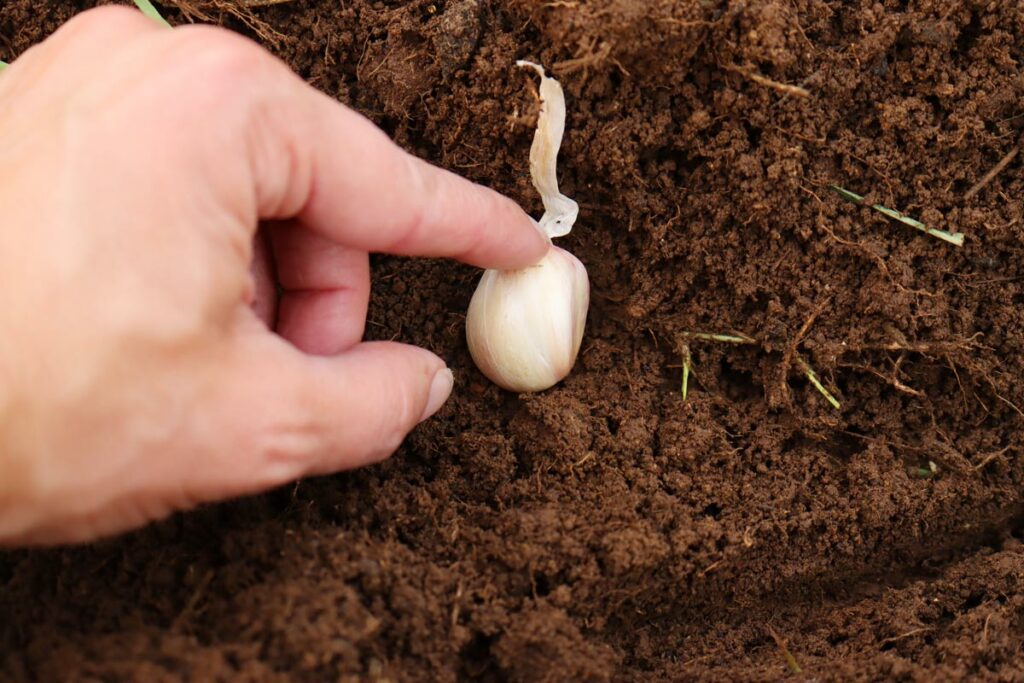
Crops You Can Plant Right Around Your First Frost
There are a couple of crops that you can actually plant right at your first frost date.
- Garlic – It’s important to get certified seed garlic because it’s certified to be free of disease. You do not want to be introducing any type of disease into your soil. That is a risk you take when you plant garlic cloves from the grocery store. The disease can stay present in your soil and affect any plant in the allium family for up to seven years. Read here for more information on planting and growing garlic.
- Potatoes – Potatoes are a crop that can be planted in the fall and they will lay dormant in the soil over the winter. Then, in the spring, when things start to warm up, they will grow. Your potatoes will begin to grow roots as soon as the soil is at the right temperature, giving them a jump start on planting them in the spring. Read here for a step-by-step tutorial on planting and growing potatoes.
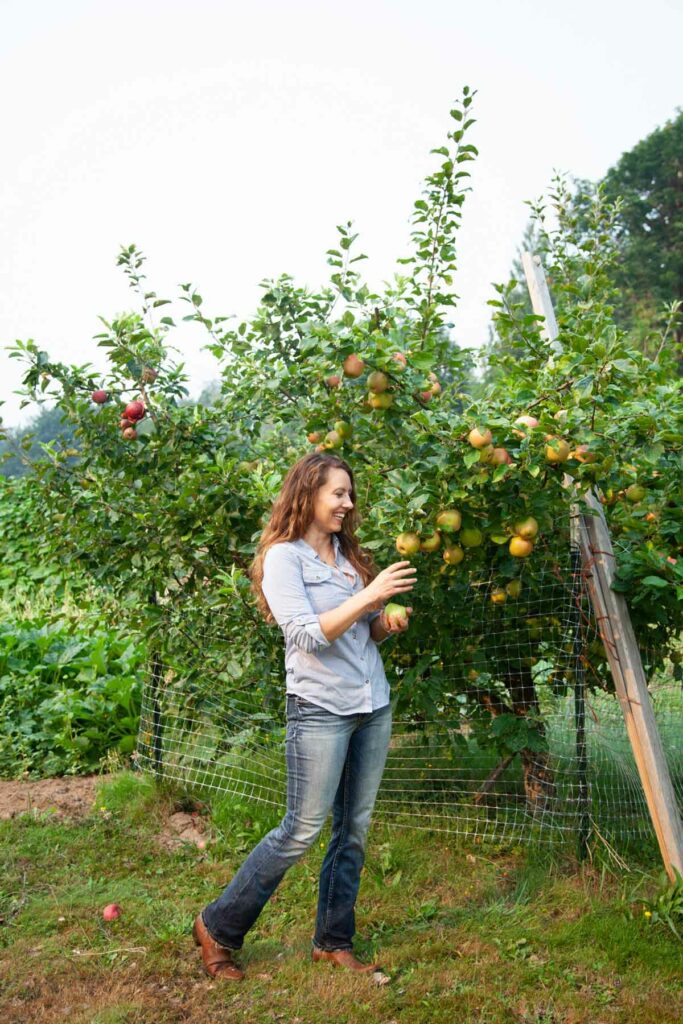
References
- Certified Seed Garlic Supplier
- The Family Garden Plan
- Free Garden Planning Chart
- Organic Gardening Workshop
Other Gardening Articles You May Enjoy
- Coffee Grounds in The Garden (4 Ways to Use Them)
- Vertical Garden Planning & Expanding Garden Spaces
- How to Prune Basil Plants to Double Your Harvest
- Biggest Garden Planning Mistakes and How to Avoid Them
- How to Plant Garlic (Fall Garlic Planting)
- How Much to Plant Per Person for a Year’s Worth of Food
- How to Germinate Seeds Faster
- Soil Remediation-How to Fix Tainted Soil
